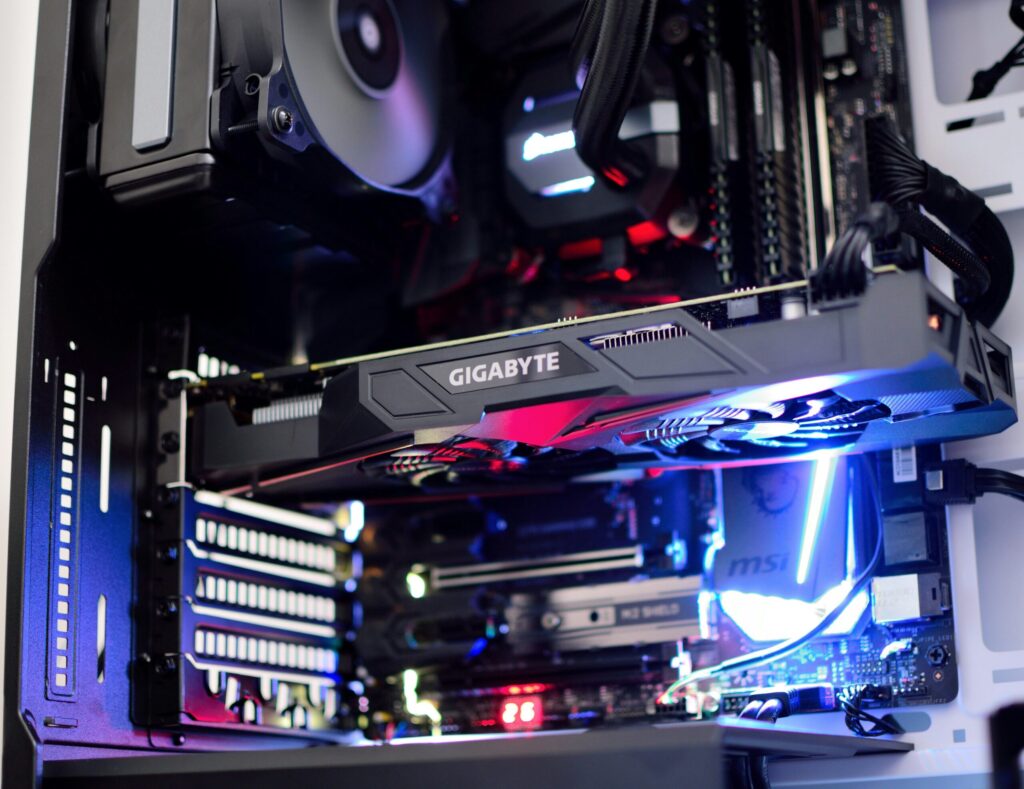
Introduction to Supercomputers
Supercomputers represent the pinnacle of high-performance computing, offering extraordinary processing speed and computational power. Unlike general-purpose computers, which execute a wide range of everyday tasks, supercomputers are engineered to perform complex simulations, advanced calculations, and large-scale data analysis at significantly accelerated rates. This immense processing capability positions supercomputers as indispensable tools in various scientific, engineering, and research domains.
The performance of a supercomputer is gauged through specific metrics, prominently Floating Point Operations Per Second (FLOPS), which measures the number of arithmetic operations the machine can perform in one second. Another critical benchmark is the High-Performance Linpack (HPL), which evaluates a system’s efficiency in solving a dense system of linear equations—a fundamental task in many scientific computations. These metrics enable precise quantification and comparison of supercomputers’ capabilities globally.
Tracing the history of supercomputers reveals significant milestones that have progressively pushed the boundaries of computational power. The journey began in the 1960s with Seymour Cray’s CDC 6600, which is widely recognized as the first supercomputer. This machine set the precedent for subsequent developments, such as Cray-1 in the 1970s, renowned for its innovative vector processing. The 1990s introduced massively parallel processing systems, like the Intel ASCI Red, marking a leap in performance scaling through parallelism.
The 21st century has witnessed exponential advancements in supercomputing, exemplified by IBM’s Roadrunner, the first to break the petaflop barrier in 2008, and more recently, machines like Fugaku in Japan, which transcend exascale computing capabilities. These milestones reflect the relentless pursuit of higher speeds and greater computational prowess, driving forward the frontiers of scientific discovery and technological innovation.
Meet the Current Champion: Fugaku
As of the most recent rankings, Fugaku stands as the world’s fastest supercomputer. Developed by RIKEN in collaboration with Fujitsu, Fugaku underscores Japan’s prowess in the realm of high-performance computing. The supercomputer marks a significant leap forward in computational capabilities, delivering an astonishing total of over 442 petaflops, a metric indicating quadrillions of calculations per second. This mammoth computational power places Fugaku decisively ahead of its nearest competitor.
At the heart of Fugaku’s prodigious performance are its ARM-based processors, specifically the A64FX CPUs, which are engineered for maximized efficiency and performance in scientific and industrial applications. Fugaku employs over 150,000 of these advanced processors, arranged in a sophisticated architecture designed to facilitate seamless data transfer and computing efficiency. This is further bolstered by Fugaku’s innovative interconnect technology, enabling rapid communication between processors, essential for its top-tier performance.
The architecture of Fugaku is a key factor in its success. Unlike traditional supercomputers that rely predominantly on x86 architecture, Fugaku leverages ARM architecture, which is lauded for its power efficiency and parallel processing capabilities. This approach not only enhances performance but also reduces energy consumption—a critical consideration in supercomputing.
To put Fugaku’s achievements into perspective, it surpassed its predecessor, Summit, the supercomputer previously hailed as the fastest. Summit, developed by IBM and housed at Oak Ridge National Laboratory in the United States, boasted a peak performance of approximately 149 petaflops. Fugaku’s innovative architecture and sheer computational muscle have propelled it past Summit, setting a new benchmark in supercomputing.
In conclusion, Fugaku represents the pinnacle of current supercomputing technology, integrating cutting-edge ARM processors and state-of-the-art architecture to achieve unprecedented computational power. It stands as a testament to the collaborative efforts of RIKEN and Fujitsu, illustrating the continual evolution and future potential of supercomputing.
Applications and Achievements
The remarkable computational power of Fugaku has facilitated a myriad of applications and scientific achievements across diverse fields. One of the most striking uses of Fugaku is in climate modeling. Scientists utilize its immense processing capabilities to run complex simulations that help predict climate change patterns with unprecedented accuracy. These models are crucial for formulating effective strategies to mitigate the impacts of global warming and guide policymaking decisions.
In the realm of drug discovery, Fugaku has been instrumental in expediting the research process. By simulating the interactions between potential drug compounds and their target proteins, Fugaku significantly shortens the time required to identify promising candidates for drug development. This capability was particularly beneficial in the response to the COVID-19 pandemic. The supercomputer was used to screen and analyze thousands of molecules to identify potential antiviral drugs, accelerating the journey from lab research to clinical trials.
Moreover, Fugaku played a pivotal role in the global response to the pandemic by facilitating advanced research models. Its extraordinary performance allowed researchers to simulate the spread of the virus under various scenarios, enabling the development of effective containment and mitigation strategies. These simulations helped public health officials and policymakers make informed decisions to better manage the pandemic’s impact on populations worldwide.
In the field of astrophysics, Fugaku has enabled researchers to conduct highly detailed simulations of cosmic phenomena. From modeling the formation of galaxies to studying black holes, the supercomputer’s ability to process vast amounts of data quickly has opened new frontiers in our understanding of the universe. Specific projects, such as the simulation of neutron star mergers, have been notably enhanced by Fugaku’s computational prowess, providing deeper insights into these cataclysmic events.
Overall, Fugaku’s unparalleled processing power and performance have made it a cornerstone in advancing scientific research and large-scale simulations, leading to faster and more precise outcomes. This supercomputer not only enhances our understanding of complex systems but also drives forward innovations that shape the future of technology and science.
The Future of Supercomputing
As we gaze into the future of supercomputing, the horizon is dominated by the ambitious goal of exascale computing. Exascale computing refers to systems capable of performing over one exaflop, or a billion billion calculations per second. This leap in computational power promises to revolutionize numerous fields by enabling more complex simulations, deeper data analysis, and accelerated innovation processes.
Among the most notable upcoming projects is the Exascale Computing Project in the United States, which aims to deliver the first exascale supercomputers by the mid-2020s. These developments will push the boundaries of what is currently possible in terms of computational performance. However, such advancements are not without their challenges. Hardware scalability remains a pressing issue, as increasing the number of processors and nodes in a system introduces significant complexity in maintaining synchronization and coherence across the entire architecture.
Energy consumption also presents a formidable obstacle. The power requirements for exascale systems are expected to be immense, potentially reaching tens of megawatts. This necessitates advances in energy-efficient computing technologies and innovative cooling solutions to manage the substantial heat output. Novel cooling methods, such as liquid cooling and immersion cooling, are being explored to address these demands.
Software development is equally critical. Programming paradigms need to evolve to exploit the full potential of exascale systems. This entails developing new algorithms and optimizing existing ones to operate efficiently across a massively parallel architecture. Additionally, ensuring reliability and fault tolerance in these systems is paramount given their complexity and scale.
Emerging technologies, such as quantum computing and artificial intelligence (AI), hold the potential to intersect with and influence the future of supercomputing. Quantum computing promises exponentially faster computations for certain types of problems, while AI can enhance the efficiency of supercomputers by optimizing workloads and predictive maintenance. The integration of AI-driven analytics into supercomputing workflows can lead to smarter, more autonomous systems.
The impacts of these advancements on various industries and scientific research are far-reaching. Fields such as climate modeling, genomics, materials science, and national security stand to benefit tremendously from increased computational power. By tackling grand challenges, accelerating scientific discoveries, and driving technological innovation, the future of supercomputing holds the promise of transformative benefits for society at large.



